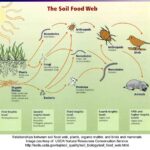By Casey Smith, Naturalist
 You might think that dead tree you see in a park is unsightly. What you don’t see is what the tree is doing for nature. Those dead trees, called snags, have high wildlife value. Hundreds of species of birds, mammals, amphibians, reptiles, and even fish can benefit from snags for food, nesting, or shelter. Birds and mammals use snags as shelter to raise their young. For raptors, they provide an unobstructed vantage point for hunting. Tree cavities and loose bark are used by animals to store food. Loose bark is also a cozy roosting spot for bats. Insects feeding on the dead wood are food for woodpeckers and nuthatches. Fungi derive nutrients from the decaying organic material. If a snag falls into water, fish and amphibians hide under and around the dead wood. Once on the ground, a dead tree is a great place for new seeds to take hold. Mosses, lichens, and fungi all grow on snags and aid in the return of vital nutrients to the soil through decomposition. One simply must roll over a dead log in the woods to see the amount of life it’s supporting. Whether it is still standing, or has fallen, dead wood plays an important role in nature.
You might think that dead tree you see in a park is unsightly. What you don’t see is what the tree is doing for nature. Those dead trees, called snags, have high wildlife value. Hundreds of species of birds, mammals, amphibians, reptiles, and even fish can benefit from snags for food, nesting, or shelter. Birds and mammals use snags as shelter to raise their young. For raptors, they provide an unobstructed vantage point for hunting. Tree cavities and loose bark are used by animals to store food. Loose bark is also a cozy roosting spot for bats. Insects feeding on the dead wood are food for woodpeckers and nuthatches. Fungi derive nutrients from the decaying organic material. If a snag falls into water, fish and amphibians hide under and around the dead wood. Once on the ground, a dead tree is a great place for new seeds to take hold. Mosses, lichens, and fungi all grow on snags and aid in the return of vital nutrients to the soil through decomposition. One simply must roll over a dead log in the woods to see the amount of life it’s supporting. Whether it is still standing, or has fallen, dead wood plays an important role in nature.
 I know you have heard of the green food web, sometimes called the grazing food web, and seen the diagrams of it with plants starting at the base, followed by herbivores, and then carnivores. As all ecosystems require a method to recycle material from dead organisms and waste, most grazing food webs have an associated detrital food web. The detrital or brown food web starts with dead decaying plant matter, like snags, and decaying animal matter, like waste or the dead animal itself. Less than 10% of plant matter is eaten while it is still alive. The other 90% of terrestrial plant matter becomes detritus, the base of the brown food web. Bacteria, fungi, and other decomposers recycle the decaying organic material back into the ecosystem, then are themselves consumed by other organisms. Most consumers are no more than 2 degrees from detritus. Think about the food you eat. If you eat mushrooms, you are one degree away from detritus. Essentially, everything is nourished by dead stuff. So, while you don’t eat poop directly, your food probably does.
I know you have heard of the green food web, sometimes called the grazing food web, and seen the diagrams of it with plants starting at the base, followed by herbivores, and then carnivores. As all ecosystems require a method to recycle material from dead organisms and waste, most grazing food webs have an associated detrital food web. The detrital or brown food web starts with dead decaying plant matter, like snags, and decaying animal matter, like waste or the dead animal itself. Less than 10% of plant matter is eaten while it is still alive. The other 90% of terrestrial plant matter becomes detritus, the base of the brown food web. Bacteria, fungi, and other decomposers recycle the decaying organic material back into the ecosystem, then are themselves consumed by other organisms. Most consumers are no more than 2 degrees from detritus. Think about the food you eat. If you eat mushrooms, you are one degree away from detritus. Essentially, everything is nourished by dead stuff. So, while you don’t eat poop directly, your food probably does.









